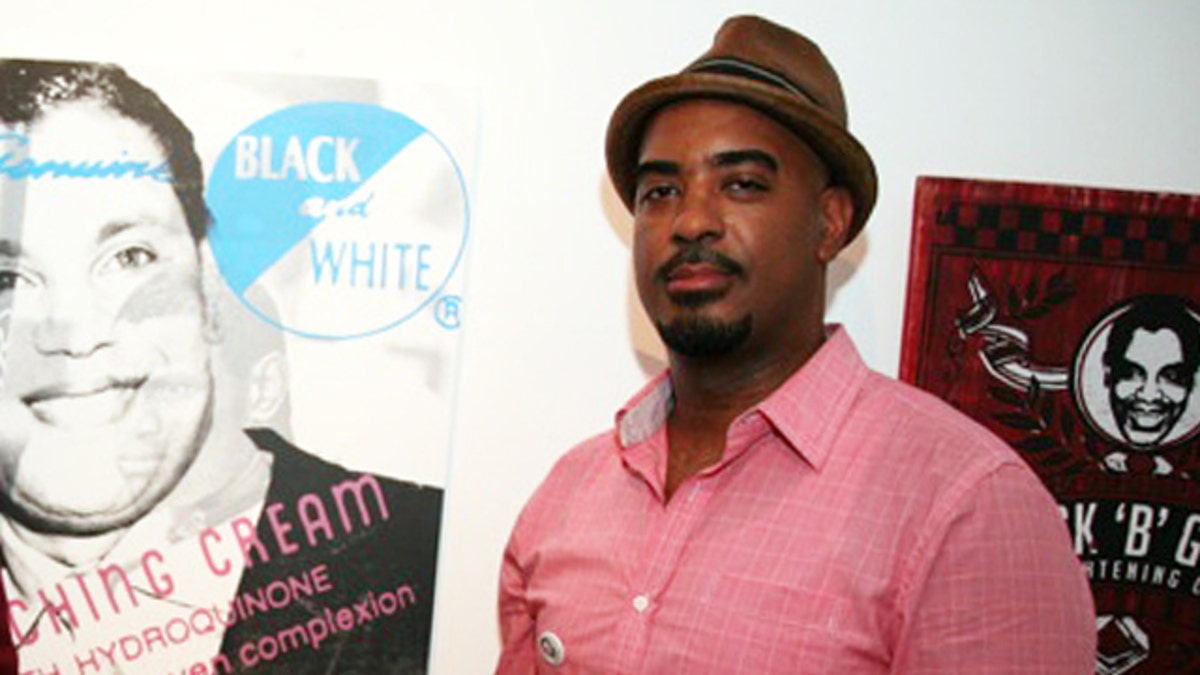
(Briana E. Heard)
Dominican artist Tony Peralta shares the hardships of his upbringing through his art.
Complejo, his exhibit which will be displayed this week at Miami’s Art Basel, chronicles the racial struggles of growing up a first-generation Dominican in New York City.
“I would always get into argument with my family, because they claimed that I was trying to be black,” Peralta said. “I would tell them: ‘We are black’.”
Complejo uses images screen-printed on canvas to start a conversation of what is going on in most Dominican homes.
Every dark skinned Dominican I know grew up with has a complejo
“Every dark-skinned Dominican I know grew up with has a complejo,” Peralta told Fox News Latino. “It’s not even from an outside source. It’s from your family -- not down the street. It’s in your home.”
Complejo, which means having insecurities, targets the root of those problems head on. One of the screen printed canvases is an image of an inexplicably fairer Sammy Sosa, with the words “complejo” Typed into a red box that is placed atop his eyes.
“Sosa was already in the history books as a legendary baseball player, so when he did that I felt like he was a moron,” Peralta said.
Growing up Dominican and dark skinned, the darkness of your skin is always kept in the light, and it is always a topic.
“Sosa tainted his place in the history books,” he said.
Being Latino doesn’t always mean that you are dark skinned. Latinos complexion can range anywhere from very dark to very fair. Latinos can have really curly hair or very straight hair. According to Peralta, the light-skinned Latino has become the norm.
“There is a certain Latino look that the public is comfortable with,” said Peralta, like “the Eva Longoria look.”
He said he does not have a problem with the media perception of what a Latino looks like.
“I’ve made peace with it,” he said.
In the complejo exhibit, there is also an image of a white Barbie with the Barbie logo over it and then in frail letters underneath it, the word linda; which means pretty, parallel to this canvas is a screen printed image of a black Barbie with the same logo, in the same position, but instead the word fea is typed under the logo. Peralta thinks the self esteem issues that plagues Afro-Latinos usually plagues women.
“I think women go through it more than men do,” Peralta said.
My mom would always tell me “y ese pelo malo?” (Why do you have bad hair?) Peralta can only imagine the damage that does to a young girl. “Parents need to learn how to speak to their kids, those things affect the kids,” Peralta said.
Peralta is quick to point out that his mother only did what she knew, what she grew up with and that he is happy that what she taught him.
“When I gained newfound knowledge of my African roots, my friends would argue with me that I am not black,” said Peralta. “I’ve always just wanted to have this conversation that my art is doing for me.”
Peralta's exhibit tells the story of his experience growing up as a first-generation black Latino in the states. Through Art Basel, he is hoping to be able to expose this conversation to a broader audience.
“The art world is Art Basel,” he said. “This is a great opportunity for me, my work and my heritage.”
You can reach Sandra E. Garcia at: SandraEvangelinaGarcia@gmail.com or via Twitter: @S_Evangelina
Follow us on twitter.com/foxnewslatino
Like us at facebook.com/foxnewslatino

